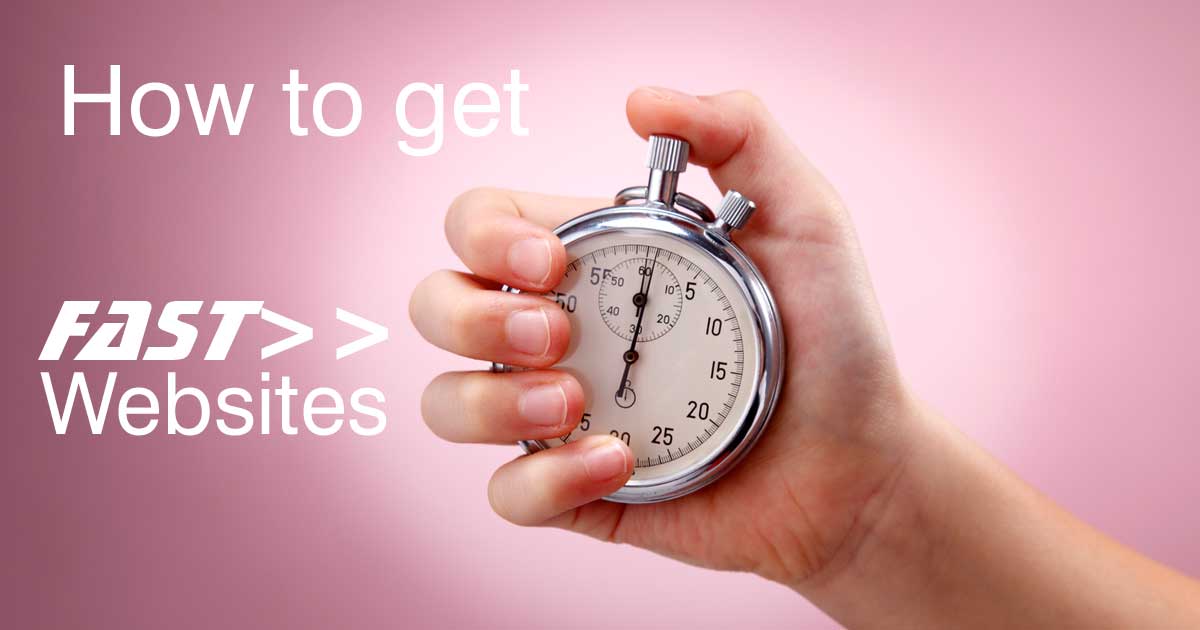Not only does a faster website help you rank better on Google, but it has been shown to increase conversions which grows your online business.
In addition, as of May 2021 Google is rolling out it’s pages experience algorithm which includes a big page speed indicator. Faster websites will rank better than slower ones. Now’s the time to work on your page speed.
Here’s a guide to help.
Benefits of Speeding Up Your Website
Google has been using website speed and mobile website speed as a ranking factor for a while now. I personally have experienced increased ranking in a wide range of keywords, just by speeding up the website. In addition, there are many studies that show increased page speed results in increased conversions.
- 40% of users abandon a page that takes more than 3 seconds to load.
- 47% of consumers expect a web page to load in 2 seconds or less.
Conclusion: Investing in speeding up your website is worth the investment!
How to Speed Up Your Website
Hosting
The number one, and easiest way to ensure a fast website is upgrade your hosting plan. Maybe you started out with a pretty basic site and have a $10/month shared hosting plan, but over time you’ve added more functionality and Plugins to your WordPress website. Now your pages load slow. Time to first byte is a key measurement of page speed and is largely dependent upon how fast your web server can process the PHP and other scripts required to run your web page. There are other options for hosting that have a dramatic effect on page speed.
Slowest: Shared Hosting, cost = cheap (about $10-$20/month) See Plans
Better: WordPress Hosting, cost = inexpensive (about $10/-$20month) See Plans
Better Still: VPS Hosing (Virtual Private Server) cost = reasonable (about $40/month to $200/month) See Plans
Fastest: Dedicated Server cost= expensive ($150 -$500/month) See Plans
The high end plans seem like an expensive option, but if you’re a high volume ecommerce site, it’s easy to justify the cost of a faster server with the increased sales that come with it.
On-Site Speed Optimization
Simple Ways to Increase Page Speed
These simple ways to increase page speed generally don’t require a lot of time or expertise and can be done with free plugins and software.
- Use GZIP Compression – You can easily just enable GZIP compression on your server with a few clicks and it will have a huge impact on page speed.
- Optimize Images – There are simple Plugins you can install that will compress and remove redundant data from image files. The smaller the images, the faster they load and the smaller the page.
- Resize Images – Use photo editing software to make your images smaller and lower resolution. You don’t need a 2500x 2500 pixel image to fit in a box that’s 200×200. Replace all your images with smaller ones!
- Install a page cache plugin – many page cache Plugins are available for free for WordPress and usually can be installed with a few clicks.
- Remove Query Strings – Some of your Javascript and CSS files will have query strings at the end of the URL, and in most cases they are not necessary and just take time querying the database. For example: mysite.com/js_file.js?page_view could in most cases be stripped down to www.mysite.com/js_file.js There are Plugins that can help you do this and this does impact speed if you have a lot of query strings.
- Lazy Load Images – Images don’t all load with the page, they load as a person scrolls down the page.
Harder Ways to increase Page Speed
These ways to increase page speed require a degree of expertise to implement, plus a large time commitment for testing and tweaking to get right.
- Minify Javascript & CSS – All the styling and fancy functions are your website are coded with CSS and Javascript. A reasonably sized wordpress website may have 100 JS and CSS files to load with every page. Most of the files have lots of white space and blank lines that make them easy for coders to read, but slow for web browsers to render. You can use software to compress Javascript and CSS to take out all the empty space and speed up loading.
- Combine Javascript & CSS – In many cases, the 100 JS and CSS files can be combined into very few files. Sometimes it’s not possible to combine all files because your website won’t look right, but you definitely can combine many files into just a handful. This increases load time significantly.
- Enable Browser Cache – You can enable browser caching by editing your .htaccess file. Basically, you tell the web browsers that the JS, CSS and HTML and images, etc. Are good for a certain length of time. So, for example your logo that’s on every page only has t be downloaded once and the web browser will use the same file stored locally on your computer instead of downloading it again. This doesn’t necessarily speed up your website, but it appears to the person browsing it that it’s faster.
- Async Javascript – This can be a challenge to get right because some JavaScript needs to be loaded first before others. You may have dozens of JS files, so to get the right order can be difficult. However, if you can allow non-critical JS files to load later your overall page experience will be faster.
Complicated Ways to Increase Page Speed
These ways to increase page speed have great benefits but require a high degree of technical expertise and are time consuming to implement.
- Serve files from different domains – You could move your pictures to a subdomain of your site like media.mysite.com and then what happens is you load images and the rest of your site simultaneously from two sources. Imagine it like a garden hose. You can only get so much water from one hose, but with two hoses the water flows twice as fast. This is a little bit complicated to implement as you have to create a sub domain and move all your images there. You then have to override WordPress’s default location for files and point it to your sub domain. However, this effort is worth it as it dramatically increases page speed.
- Implement a CDN – There are many commercial CDN services available including CloudFlare which has some free plans. A CDN is a Content Delivery Network. Basically, what happens is small pieces of your website are uploaded to the CDN network all over the World and when someone requests a page, some of the data comes from your site, but much of the data is cached on servers around the World so you get little pieces from everywhere. This really helps with page speed an eliminates bottlenecks This method is a little bit complicated to implement because you have to change your DNS servers to point to the CDN Network and requires a degree of expertise to get it working optimally.
- Change the way your web server caches and serves up the pages. – This is only possible on a VPS and generally you want to use PHP-FPM to speed up how pages are served up.
- A complete Re-Design – There is only so much you can do to optimize a website that’s already built. Speed and Visual Design are often negatively correlated. That is to say that sites with lots of pictures, videos and dynamic content will be slower. There’s only so much you can do to optimize a site that’s heavy on design elements. To achieve very high page speeds (ie: 1 second or less, a re-design is often necessary to re-think the pages, what content is required, what content can be moved elsewhere to gallery pages and smaller images, etc. If you really want to achieve the highest page speed, a consultation with a website designer is often necessary to put together a speed focused design plan.
Need Help Implementing Page Speed Optimization?
iGo Sales and Marketing offers plans to increase the speed of your website. We take care of it all for you. See Plans.

